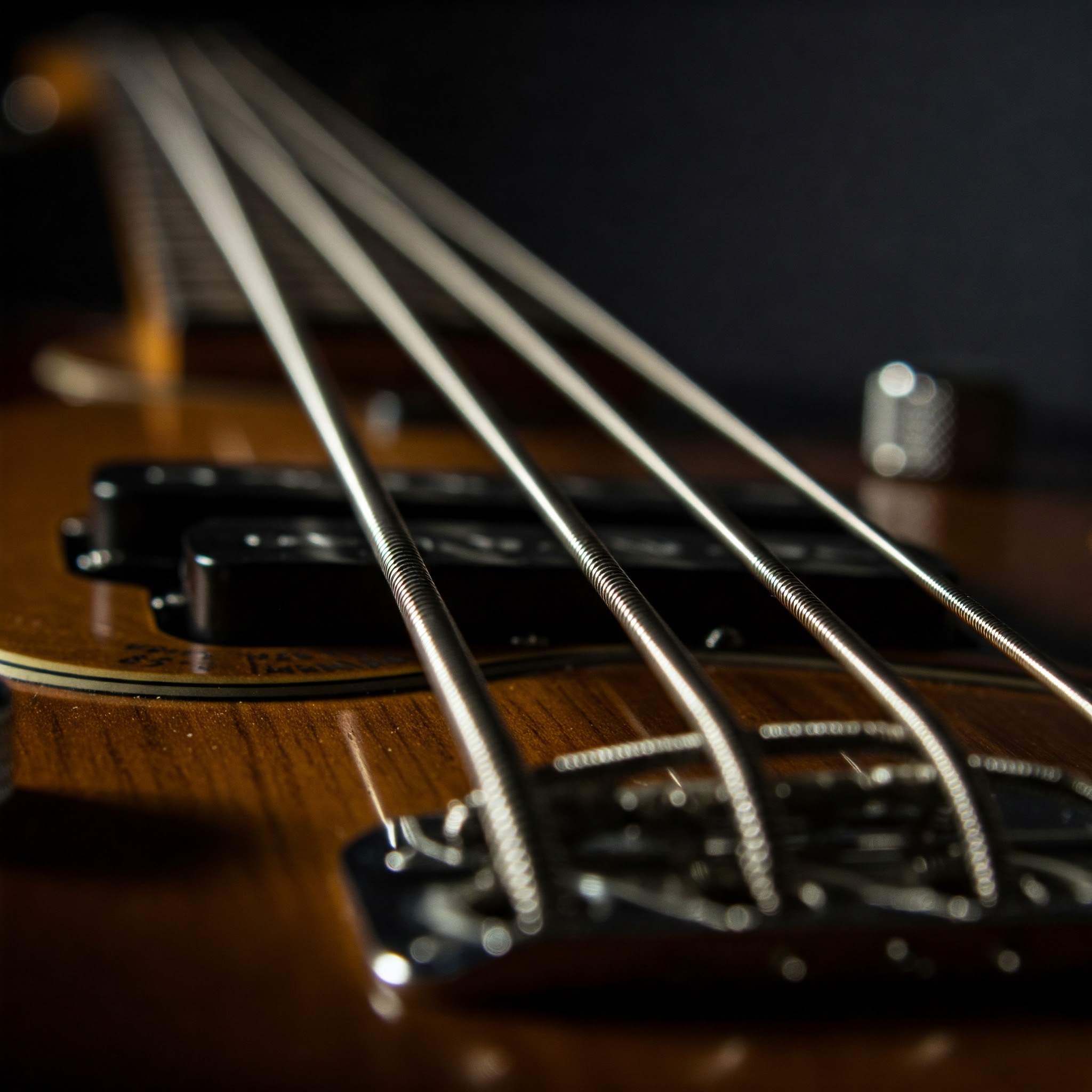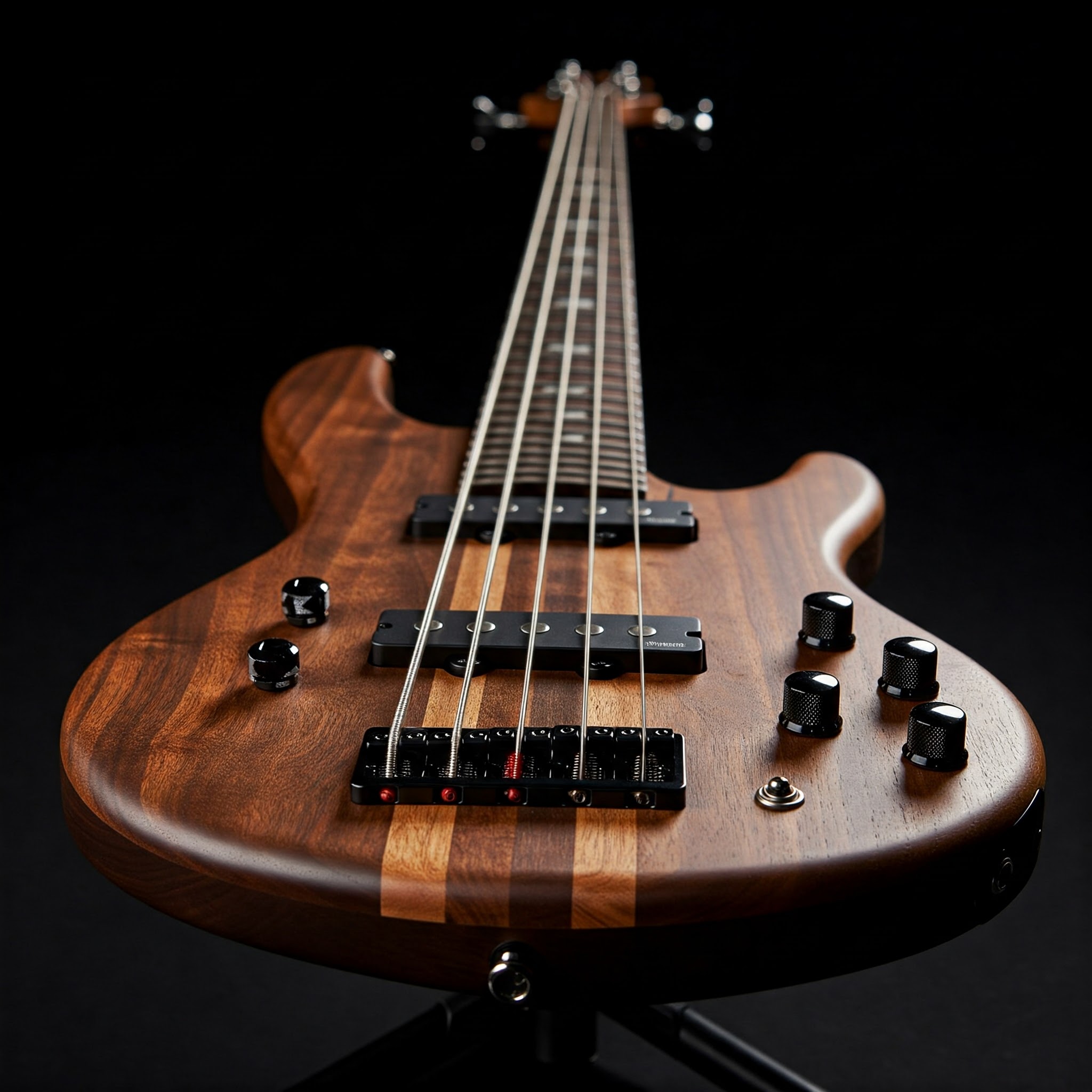As a professional bassist and string enthusiast with over 15 years of experience, I’ve tested countless bass strings across various genres and playing styles. Today, I’m diving deep into the world of Rotosound bass strings – a legendary brand that has shaped the sound of bass guitar music since the 1960s. Whether you’re a seasoned professional or just starting your bass journey, understanding how rotosound bass strings can transform your tone is essential for any serious player.
✨Was this helpful? Spread the word! 🚀
Rotosound bass strings have graced the recordings of iconic bassists like John Entwistle, Paul McCartney, and Geddy Lee, helping to create some of the most memorable bass lines in music history. But what makes these strings so special, and how do they compare to other options on the market today?
Comparison: Rotosound Bass Strings vs. Competitors
| Feature | Rotosound Bass Strings | Other Premium Brands | Budget Alternatives |
|---|---|---|---|
| Tone Longevity | 8-12 weeks | 4-8 weeks | 2-4 weeks |
| Price Range | $25-45 | $30-60 | $15-25 |
| Brightness | Exceptional | Very Good | Moderate |
| Manufacturing | UK-made precision | Variable | Often offshore |
| Famous Users | McCartney, Entwistle, Lee | Various | Few notable endorsements |
| Material Innovation | Pioneering (Swing Bass 66) | Following trends | Basic materials |
| Tone Consistency | Excellent | Good | Variable |
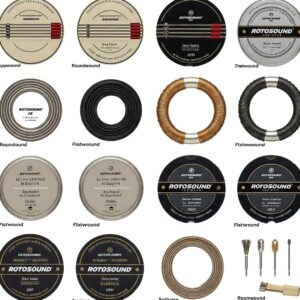
In this comprehensive guide, I’ll walk you through everything you need to know about rotosound bass strings – their history, what makes them unique, how to choose the right set for your playing style, detailed reviews of their most popular sets, and expert maintenance tips to extend their lifespan. By the end, you’ll have all the knowledge needed to make an informed decision about whether these legendary strings deserve a place on your bass guitar.
The History and Legacy of Rotosound Bass Strings
Rotosound’s story begins in 1958 when James How, an accomplished engineer and musician, founded the company in the UK. However, it was the development of their groundbreaking Swing Bass 66 strings in the early 1960s that truly put Rotosound on the map. These rotosound bass strings featured a unique round-wound stainless steel construction that delivered unprecedented brightness and sustain – characteristics that were previously unheard of in bass strings.
The revolutionary sound of Rotosound bass guitar strings quickly caught the attention of prominent bassists. John Entwistle of The Who became an early adopter, using them to create his distinctive growling tone that helped define rock bass playing. His endorsement catapulted rotosound bass strings into the spotlight, with countless other professionals soon following suit.
Paul McCartney’s use of Rotosound bass strings on numerous Beatles recordings further cemented the brand’s reputation. The distinctive bright tone and pronounced attack of these strings can be heard on classic tracks like “Paperback Writer” and “Rain,” showcasing how rotosound bass strings could cut through dense mixes while maintaining exceptional note definition.
Throughout the decades, Rotosound has continued to innovate while maintaining their commitment to quality. Their manufacturing process still takes place in the UK, with meticulous attention to detail at every stage. This dedication to craftsmanship is a key reason why rotosound bass strings have maintained their reputation for excellence over more than 60 years.
Today, Rotosound offers an extensive range of bass strings catering to virtually every style and preference. From their classic Swing Bass series to specialty flatwound and pressure-wound options, there’s a set of rotosound bass strings designed to enhance any bass and playing style. Let’s dive deeper into what makes these strings so special from a technical perspective.
What Makes Rotosound Bass Strings Unique?
Material Composition and Construction
The distinctive sound of rotosound bass strings comes primarily from their material composition and winding technique. Most Rotosound bass guitar strings feature a high-carbon steel core wrapped with various metals depending on the specific model:
- Stainless Steel: Used in their flagship Swing Bass 66 line, providing bright tone with excellent durability
- Nickel: Found in models like the Jazz Bass 77, offering a warmer tone with less finger noise
- Bronze: Used in acoustic bass strings for balanced warmth and projection
- Monel: A specialty alloy used in their flatwound strings for vintage tone with extended life
The winding process itself is crucial to the rotosound bass strings’ performance. Rotosound uses precision machinery to maintain consistent tension during winding, ensuring even response across all strings. Their round-wound strings feature a distinctive texture that enhances grip and contributes to their characteristic bright tone.
Perhaps most importantly, rotosound bass strings are known for their consistency. Each set undergoes rigorous quality control checks before packaging, guaranteeing reliable performance every time. This attention to detail has made them a favorite among professional bassists who can’t afford surprises during recording sessions or live performances.
Tonal Characteristics
When bassists discuss rotosound bass guitar strings, tone is inevitably the focal point. These strings deliver several distinctive sonic characteristics:
- Pronounced Brightness: The stainless steel round-wound construction creates a tone rich in upper harmonics
- Powerful Fundamental: Despite their brightness, rotosound bass strings maintain a strong fundamental note
- Dynamic Response: They respond exceptionally well to changes in playing intensity
- Sustain: Long sustain with minimal decay, ideal for letting notes ring
- Articulation: Clear definition between notes, even in fast passages
This tonal profile makes rotosound bass strings particularly well-suited for styles where the bass needs to cut through the mix. Rock, punk, metal, and funk players often gravitate toward these strings for their ability to provide both punch and definition. However, their versatility extends far beyond these genres, with jazz and session players also finding sets that complement their requirements.
One unique aspect of rotosound bass strings is how they age. Unlike many strings that simply deteriorate, Rotosounds often transition through different tonal phases. Brand new strings provide maximum brightness, which gradually mellows into a more balanced tone before eventually losing clarity. Many experienced users appreciate this evolution, with some preferring the sound after a few weeks of play over the fresh-out-of-the-package tone.
Popular Rotosound Bass Strings Series
Swing Bass 66 – The Classic
The Swing Bass 66 series remains Rotosound’s flagship product and the standard by which other rotosound bass strings are measured. These stainless steel round-wound strings deliver the quintessential bright, punchy tone that made the brand famous. Available in various gauges, the most popular being the RS66LD set (45-105), they provide excellent versatility across musical styles.
What makes these rotosound bass guitar strings special is their perfect balance of brightness and body. While they offer exceptional clarity and attack, they never sound thin or harsh. The stainless steel construction also provides impressive durability, with many players reporting weeks of consistent tone before noticeable degradation.
The Swing Bass 66 rotosound bass strings also feature excellent intonation across the entire fretboard. Whether you’re playing low root notes or high melodic passages, these strings maintain accurate pitch and consistent response. This reliability makes them a favorite for both recording and live performance.
I’ve personally used Swing Bass 66 strings on my Fender Jazz Bass for years, and they’ve never disappointed in terms of tone or durability. The bright attack makes slap techniques particularly rewarding, while fingerstyle playing benefits from the clear articulation and sustain.
D’Addario EXL170-5 is a fantastic alternative if you’re looking to try something different from the classic Rotosound sound but want similar quality. These nickel-plated strings offer slightly less brightness but excel in smooth playability.
Jazz Bass 77 – Warm Versatility
For players seeking a warmer tone without sacrificing definition, Rotosound’s Jazz Bass 77 series provides an excellent option. These rotosound bass strings use a monel-wrapped construction that delivers rich mids with slightly rolled-off highs – perfect for jazz, blues, and R&B styles.
The Jazz Bass 77 rotosound bass guitar strings offer a smoother feel under the fingers compared to the Swing Bass series, making them comfortable for extended playing sessions. They also produce less finger noise, an advantage for recording situations where maximum clarity is essential.
Despite their name, these rotosound bass strings are remarkably versatile. While they excel in traditional jazz contexts, their balanced tone works well in many other genres. The medium-scale flatwound variants are particularly popular among players using short-scale basses like the Hofner Violin Bass, famously used by Paul McCartney.
The Jazz Bass 77 strings typically last longer than their stainless steel counterparts, with many players reporting consistent tone for months of regular use. This longevity makes them an economical choice despite their slightly higher initial cost compared to some other rotosound bass strings.
Ernie Ball Slinky Flatwound Bass Strings offer a comparable warm tone to the Jazz Bass 77 series with perhaps a touch more definition in the upper mids. They’re worth considering if you enjoy the Jazz Bass 77 concept but want to explore other options.
Steve Harris Signature – Metal Power
For heavy metal bassists, Rotosound created the Steve Harris Signature set in collaboration with the Iron Maiden bassist. These rotosound bass strings are specifically designed to deliver the aggressive, cutting tone that has defined Harris’s iconic playing style for decades.
Based on the Swing Bass 66 design but with custom gauges (50-110), these rotosound bass guitar strings provide enhanced low-end punch and excellent durability for aggressive playing techniques. The heavier gauge offers increased tension, which improves note definition when playing with a pick or using techniques like Harris’s distinctive galloping fingerstyle pattern.
Despite their metal orientation, these rotosound bass strings work surprisingly well in other high-energy genres like punk, hard rock, and even aggressive funk. Their ability to cut through dense guitar mixes makes them valuable in any situation where the bass needs to establish a strong presence.
The Steve Harris Signature rotosound bass strings deliver exceptional consistency across all four strings, with balanced output and response. This uniformity is particularly valuable when performing complex runs and fills that traverse multiple strings.
DR Strings Hi-Beam provides a similar bright, cutting tone suitable for metal and rock. They’re a bit stiffer than the Steve Harris set but offer comparable projection and durability.
Comparison of Popular Rotosound Bass Strings Models
| Model | Best For | Tone Profile | Gauge Options | Price Range | Durability |
|---|---|---|---|---|---|
| Swing Bass 66 | Rock, Funk, All-purpose | Bright, Punchy | Light to Extra Heavy | $25-35 | Very Good |
| Jazz Bass 77 | Jazz, Blues, Studio | Warm, Balanced | Medium to Heavy | $35-45 | Excellent |
| Steve Harris Sig | Metal, Hard Rock | Aggressive, Cutting | Custom (50-110) | $30-40 | Excellent |
| Solo Bass 55 | Vintage Rock, Blues | Rich, Rounded | Medium to Heavy | $30-40 | Very Good |
| Tru Bass 88 | Motown, Recording | Smooth, Vintage | Medium to Heavy | $40-50 | Outstanding |
| Funk Master | Slap, Pop, Funk | Ultra Bright | Light to Medium | $25-35 | Good |
💬 Just one click – help others make better buying decisions too!😊
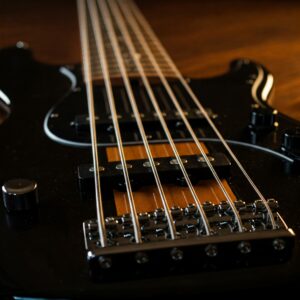
How to Choose the Right Rotosound Bass Strings
Selecting the perfect set of rotosound bass strings involves considering several factors related to your instrument, playing style, and tonal preferences. Here’s a comprehensive guide to making the right choice:
Consider Your Bass Guitar Type
Different bass guitars respond uniquely to various string types. Here’s how to match rotosound bass strings to your instrument:
- Precision Bass: The split-coil pickup configuration of Precision basses works exceptionally well with Swing Bass 66 rotosound bass strings. The brightness helps articulate the somewhat darker P-bass tone while maintaining its characteristic punch.
- Jazz Bass: With its brighter inherent sound, a Jazz Bass pairs beautifully with either Swing Bass 66 (for maximum cut) or Jazz Bass 77 rotosound bass guitar strings (for a more balanced tone).
- Short-Scale Basses: These instruments benefit from strings specifically designed for their shorter length. Rotosound offers several models in short-scale configurations, with the Jazz Bass 77 Monel strings being particularly popular for Hofner-style basses.
- 5+ String Basses: Extended-range instruments require strings that maintain consistent tension across all strings. Rotosound’s 5-string sets are carefully calibrated to provide balanced response from the low B string through the entire range.
- Fretless Basses: The smooth fingerboards of fretless instruments pair wonderfully with flatwound rotosound bass strings like the Jazz Bass 77 or Tru Bass 88 series, which minimize finger noise and reduce wear on the fingerboard.
Match Strings to Your Playing Style
Your technique and musical preferences should heavily influence your choice of rotosound bass strings:
- Fingerstyle Players: For traditional fingerstyle technique, most Rotosound series work well. Choose Swing Bass 66 for brightness or Jazz Bass 77 for warmth.
- Pick Players: The Swing Bass 66 or Steve Harris Signature rotosound bass strings excel with pick technique, offering great attack and definition.
- Slap Technique: Funk Master or Swing Bass 66 in lighter gauges provide the brightness and response needed for slap and pop playing.
- Tap Technique: Two-handed tapping benefits from the articulation of Swing Bass 66 rotosound bass guitar strings in medium gauges, which provide enough tension for clean notes without excessive resistance.
Consider String Gauge
String gauge significantly impacts playability and tone. Rotosound offers their bass strings in various gauge configurations:
- Light Gauge (40-90): Easier to play with lower tension, producing a thinner tone with less volume. Ideal for beginners, players with hand issues, or those seeking fast playability.
- Medium Gauge (45-105): The most versatile option, offering a good balance of playability and tone. This is the standard for most rotosound bass strings and works well across musical styles.
- Heavy Gauge (50-110): Provides more tension, volume, and sustain, with enhanced low-end response. Better for drop tunings and aggressive styles, though they require more finger strength.
- Custom Gauges: Some Rotosound sets feature hybrid gauges optimized for specific playing styles or tunings, such as the Steve Harris Signature model.
Roundwound vs. Flatwound
Rotosound offers both roundwound and flatwound bass strings, each with distinct characteristics:
- Roundwound: The classic Swing Bass 66 and most rotosound bass strings feature round winding, providing bright tone, good grip, and pronounced attack. They’re versatile but can produce finger noise.
- Flatwound: Series like Jazz Bass 77 and Tru Bass 88 use flat winding, delivering smoother feel, reduced finger noise, and warmer tone. They last longer but cost more initially.
- Pressure Wound: An intermediate option between round and flat, offering some brightness with reduced finger noise. Solo Bass 55 rotosound bass guitar strings use this construction method.
By carefully considering these factors, you can identify the perfect set of rotosound bass strings for your specific requirements. Remember that experimentation is valuable – many professional bassists keep several different types on hand for various musical situations.
Top Recommended Rotosound Bass Strings for Different Styles
For Rock and Alternative
For rock bassists seeking that classic punchy sound, the Rotosound Swing Bass 66 RS66LD set (45-105) remains the gold standard. These rotosound bass strings deliver the perfect balance of attack, sustain, and midrange presence that allows bass lines to cut through dense guitar arrangements without sounding thin.
The round-wound stainless steel construction provides excellent response to dynamic playing, making these rotosound bass guitar strings ideal for everything from subtle verses to powerful choruses. They’re particularly effective for rock styles that incorporate both fingerstyle and pick techniques.
Alternative rock players who incorporate more experimental techniques might prefer the Rotosound Swing Bass 66 RS66LH set (50-110), which offers slightly more tension and low-end presence. These heavier rotosound bass strings excel when using drop tunings or when you need maximum punch from your instrument.
GHS Bassics strings provide a comparable bright tone to Swing Bass 66 rotosound bass strings but with slightly less finger noise, which some rock players might prefer.
For Jazz and Blues
Jazz and blues bassists typically prefer a warmer, more vintage tone, making the Rotosound Jazz Bass 77 RS77LD set the ideal choice. These monel flatwound rotosound bass strings deliver rich, smooth sound with reduced finger noise – perfect for upright-like tone from an electric bass.
The Jazz Bass 77 rotosound bass guitar strings provide excellent intonation across the fretboard, with balanced string-to-string response that’s essential for complex jazz harmonies. Their reduced brightness compared to roundwound strings helps them blend beautifully with acoustic instruments in traditional jazz settings.
For blues players who want a bit more grit while maintaining warmth, the Rotosound Solo Bass 55 RS55LD pressure-wound strings offer an excellent middle ground. These rotosound bass strings combine elements of both round and flatwound construction for a distinctive vintage tone with improved articulation.
Thomastik-Infeld Jazz Rounds offer a unique alternative to Jazz Bass 77 strings with a similar warm tone but slightly more focus in the midrange, which can help for melodic bass playing in jazz contexts.
For Funk and R&B
Funk demands strings with exceptional brightness and response, making the Rotosound Funk Master RS66F set (40-100) the clear choice. These rotosound bass strings are specifically designed for slap and pop techniques, with reduced tensions that facilitate explosive playing while maintaining enough substance for fingerstyle grooves.
The Funk Master rotosound bass guitar strings feature slightly reduced core diameters compared to standard Swing Bass 66 strings, enhancing response to advanced techniques while retaining the characteristic Rotosound brightness. Their exceptional note definition ensures every nuance of complex funk patterns comes through clearly.
For R&B players seeking a more balanced tone that works well for both finger-style and slap techniques, the standard Rotosound Swing Bass 66 RS66LC (40-100) provides excellent versatility. These rotosound bass strings deliver the perfect blend of punch and warmth for supporting vocal-driven R&B tracks.
Elixir Nanoweb Bass Strings offer similar brightness to Funk Master strings but with a coated construction that extends their lifespan, which can be beneficial for working bassists who play multiple gigs per week.
For Metal and Hard Rock
Metal bassists require strings that can deliver massive low end while maintaining definition – exactly what the Rotosound Steve Harris Signature SH77 set provides. Developed with the Iron Maiden bassist, these rotosound bass strings feature custom gauges (50-110) optimized for aggressive playing styles.
The Steve Harris Signature rotosound bass guitar strings provide enhanced tension and powerful fundamentals, ensuring your bass cuts through even the heaviest guitar and drum mix. Their durability is particularly impressive, withstanding aggressive playing techniques without rapid tone degradation.
For technical or progressive metal that incorporates extended range instruments, the Rotosound Swing Bass 66 RS665LD 5-string set adds a well-balanced low B string to the classic Rotosound formula. These rotosound bass strings maintain consistent tension across all five strings, essential for complex technical passages.
Dunlop Super Bright Steel Bass Strings provide comparable brightness and durability to the Steve Harris set, though with slightly less midrange presence.
Detailed Product Comparison Table with Pricing
| Product | Gauge | Construction | Best For | Price | Rating |
|---|---|---|---|---|---|
| Rotosound Swing Bass 66 RS66LD | 45-105 | Roundwound Stainless Steel | Versatile All-Purpose | $24.99 | ⭐⭐⭐⭐⭐ |
| Rotosound Jazz Bass 77 RS77LD | 45-105 | Flatwound Monel | Jazz, Blues, Studio | $39.99 | ⭐⭐⭐⭐½ |
| Rotosound Steve Harris SH77 | 50-110 | Roundwound Stainless Steel | Metal, Hard Rock | $29.99 | ⭐⭐⭐⭐⭐ |
| Rotosound Funk Master RS66F | 40-100 | Roundwound Stainless Steel | Slap, Funk, Pop | $26.99 | ⭐⭐⭐⭐ |
| Rotosound Tru Bass 88 RS88LD | 45-105 | Flatwound Black Nylon | Vintage, Recording | $44.99 | ⭐⭐⭐⭐ |
| D’Addario EXL170-5 | 45-130 | Roundwound Nickel | Extended Range Bass | $32.99 | ⭐⭐⭐⭐½ |
| Ernie Ball Slinky Flatwound | 45-105 | Flatwound Nickel | Warm Vintage Tone | $37.99 | ⭐⭐⭐⭐ |
| GHS Bassics | 45-105 | Roundwound Nickel | Rock, Alternative | $23.99 | ⭐⭐⭐½ |
💬 Just one click – help others make better buying decisions too!😊
✨ Experience Superior Tone – Upgrade Your Bass Today! 🎸
➡ Looking to transform your bass sound immediately? The products highlighted above are available right now with fast shipping. Click on any bold product name to check current pricing and take your playing to the next level today!
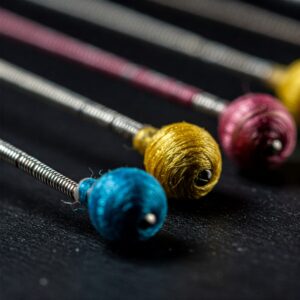
Expert Tips for Installing Rotosound Bass Strings
Proper installation is crucial for getting the most from your rotosound bass strings. Follow these professional tips for optimal results:
Preparation
- Clean your bass first: Before installing new rotosound bass strings, thoroughly clean your instrument’s neck, body, and hardware. This prevents old dirt and oil from contaminating your fresh strings.
- Gather proper tools: You’ll need wire cutters, a string winder (optional but helpful), and a clean cloth. Having everything ready makes the process more efficient.
- Consider neck relief: Some players slightly loosen the truss rod before changing strings, then readjust after installation. This can reduce neck stress, especially when making significant gauge changes.
Installation Process
- Remove strings one at a time: To maintain neck tension, many professionals recommend changing rotosound bass guitar strings individually rather than removing all at once. This is particularly important for instruments with floating bridges.
- Proper winding technique: When attaching rotosound bass strings to the tuning posts, ensure the string wraps downward, creating tension that holds the string securely in the nut slot. For most bass tuners, 2-3 wraps around the post is ideal.
- String stretching: After installation, gently stretch your new rotosound bass strings by pulling them slightly away from the fretboard along their length. This helps them stabilize tuning more quickly.
- Trim excess carefully: When trimming excess string length, leave approximately 1/4 inch beyond the tuning post. Cut at an angle to avoid sharp ends that could cause injury.
Post-Installation Setup
- Check intonation: New rotosound bass strings often require intonation adjustments, especially when changing gauge or type. Use an accurate tuner to verify octave accuracy at the 12th fret.
- Adjust action if needed: Different string types and gauges may necessitate action adjustments. Rotosound bass guitar strings with higher tension might require slightly higher action to prevent buzzing.
- Monitor neck relief: After your new rotosound bass strings have settled (usually 24-48 hours), check and adjust neck relief if necessary. The optimal amount varies depending on playing style and personal preference.
By following these installation best practices, you’ll ensure your rotosound bass strings perform optimally from day one, providing the exceptional tone and playability they’re known for.
Extending the Life of Your Rotosound Bass Strings
Quality rotosound bass strings represent a significant investment, so maximizing their lifespan is economically sensible. Here are proven methods to extend the useful life of your strings:
Regular Maintenance
- Wipe after playing: The simplest yet most effective habit is wiping your rotosound bass guitar strings thoroughly with a clean, dry cloth after each playing session. This removes corrosive oils, sweat, and dirt before they can damage the strings.
- Deep cleaning: For more thorough maintenance, occasionally clean your rotosound bass strings with specialized string cleaners or a small amount of isopropyl alcohol on a cloth. Avoid getting cleaning solutions on your instrument’s finish.
- Fingerboard conditioning: When changing strings, take the opportunity to condition your fingerboard (if unfinished wood) with appropriate oil. This prevents the wood from drying out and potentially damaging new strings.
Playing Techniques
- Hand cleanliness: Always wash and thoroughly dry your hands before playing. The oils and acids in skin can significantly accelerate corrosion of rotosound bass strings.
- Playing pressure: Using only necessary finger pressure reduces wear on both the strings and your fingers. Many players press harder than needed, which can shorten string life.
- Pick selection: If you use a pick, choose one of appropriate thickness and material. Excessively heavy or sharp picks can cause premature wear on rotosound bass guitar strings.
Storage and Environment
- Climate control: Extreme humidity or temperature fluctuations accelerate string deterioration. Store your bass in a climate-controlled environment when possible.
- Case storage: When not playing for extended periods, keeping your bass in its case protects the rotosound bass strings from environmental contaminants and UV exposure.
- Dehumidifiers: In humid environments, consider using case or room dehumidifiers to protect your strings and instrument from moisture damage.
String Rotation Strategy
Some professional bassists extend their rotosound bass strings’ usefulness by rotating positions. When the G string begins to deteriorate, they move strings down one position (G to D, D to A, etc.) and install only a new G string. While this changes the feel slightly, it can significantly extend the overall life of a set.
With proper care, many players report getting 2-3 times the normal lifespan from their rotosound bass guitar strings, making them an even better value despite their premium price point.
Common Myths About Rotosound Bass Strings
Despite their long history and popularity, several misconceptions about rotosound bass strings persist in the bass community. Let’s separate fact from fiction:
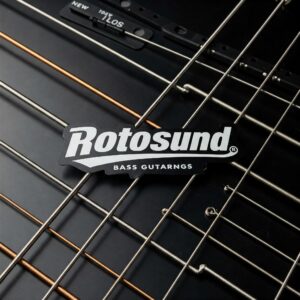
Myth 1: Rotosound Bass Strings Are Too Bright for All But Rock Music
Reality: While rotosound bass strings are indeed known for their brightness, the company produces numerous models with varying tonal profiles. The Jazz Bass 77 and Tru Bass 88 series, for example, offer warm, mellow tones perfect for jazz, blues, and studio work. Even their brighter strings mellow pleasantly with play, making them suitable for diverse genres.
Myth 2: Rotosound Bass Strings Wear Out Quickly
Reality: When properly maintained, rotosound bass guitar strings often outlast many competitors. Their industrial-grade materials and precise manufacturing ensure excellent durability. The perception of quick wear comes partly from their distinctive initial brightness, which naturally evolves – but this tonal change doesn’t mean the strings are deteriorating structurally.
Myth 3: Flatwound Rotosound Bass Strings Lack Character
Reality: Rotosound’s flatwound strings, particularly the Jazz Bass 77 series, are renowned for their rich, complex tone that maintains excellent note definition despite the warmer sound profile. These rotosound bass strings offer sophisticated character that many players prefer for certain styles, proving that “character” isn’t synonymous with brightness.
Myth 4: All Rotosound Bass Strings Feel the Same
Reality: Different Rotosound series offer distinctly different tactile experiences. From the textured feel of Swing Bass 66 rotosound bass guitar strings to the smooth playing surface of their flatwounds, and the intermediate feel of pressure-wound models, the company provides varied options to suit different playing preferences.
Myth 5: Rotosound Bass Strings Are Only for Vintage Instruments
Reality: While Rotosound has a storied history, their continued innovation ensures their strings complement modern instruments perfectly. Contemporary models like the Funk Master series are specifically designed for modern playing techniques, and their standard lines work beautifully with cutting-edge bass designs and electronics.
Understanding these realities helps bassists make more informed decisions about whether rotosound bass strings might be right for their specific needs and preferences.
How Different Basses Respond to Rotosound Bass Strings
The interaction between your specific instrument and rotosound bass strings creates a unique tonal partnership. Here’s how different bass types typically respond to these strings:
Fender Precision Bass
The Precision Bass’s split-coil pickup and solid body construction create a distinctive punchy sound that pairs exceptionally well with rotosound bass strings. The Swing Bass 66 series enhances the P-Bass’s inherent midrange focus while adding clarity and definition to its somewhat darker tone profile.
Players seeking the classic P-Bass sound often find that rotosound bass guitar strings help achieve that perfect blend of punch and articulation that made the instrument famous. For a more vintage tone, the Solo Bass 55 or Jazz Bass 77 strings complement the P-Bass’s natural characteristics while adding their own warmth.
Fender Jazz Bass
With its brighter inherent tone and dual single-coil pickups, the Jazz Bass responds differently to rotosound bass strings. The Swing Bass 66 series accentuates the J-Bass’s crisp highs and tight lows, resulting in an articulate, present sound that excels for slap techniques and situations requiring maximum cut.
For Jazz Bass players seeking more balanced tone, the Jazz Bass 77 rotosound bass strings provide a pleasing contrast to the instrument’s natural brightness, resulting in a sophisticated sound with excellent finger feel and reduced noise. The neck pickup position particularly benefits from these warmer strings.
Music Man StingRay
The StingRay’s powerful humbucker pickup and active electronics create a distinctive aggressive tone that rotosound bass strings can either enhance or complement. The Swing Bass 66 and Steve Harris Signature series push the StingRay’s natural punch to new heights, creating a formidable sound with tremendous presence.
Interestingly, many StingRay players also enjoy the Jazz Bass 77 rotosound bass guitar strings, which balance the instrument’s inherent brightness with welcome warmth and smoothness. This combination works particularly well for studio recording, where the StingRay’s sometimes excessive attack needs taming.
Acoustic Bass Guitars
Acoustic bass guitars benefit from rotosound bass strings specifically designed for their unique requirements. The Jumbo Bass series provides the perfect balance of projection, warmth, and sustain that these instruments need to perform effectively in unplugged settings.
The bronzed finish and specialized winding of these rotosound bass strings enhance the natural resonance of acoustic instruments while ensuring sufficient output to compete with acoustic guitars and other unplugged instruments in ensemble settings.
Modern Extended Range Instruments
Contemporary 5-, 6-, and even 7-string basses require strings that maintain consistent tension and tone across their extended range. Rotosound’s extended-range sets are carefully calibrated to provide balanced response from the lowest string to the highest.
These specialized rotosound bass guitar strings ensure that the low B (and lower) strings have sufficient definition while the higher strings maintain appropriate tension and playability. This balance is crucial for the complex playing styles often employed on extended-range instruments.

Professional Setup Recommendations for Rotosound Bass Strings
To get the absolute best performance from your rotosound bass strings, consider these professional setup recommendations:
Action Height
Different rotosound bass strings may perform optimally with specific action heights:
- Roundwound Strings (Swing Bass 66, Funk Master): These typically work well with moderate to low action, as their inherent brightness and projection cut through even with reduced string amplitude. Lower action allows faster playing with less effort, particularly beneficial for these responsive strings.
- Flatwound Strings (Jazz Bass 77, Tru Bass 88): These often benefit from slightly higher action, which enhances their warm fundamental tone and provides the space needed for their greater physical mass to vibrate optimally.
- Pressure Wound Strings (Solo Bass 55): A middle-ground action height typically suits these rotosound bass guitar strings best, balancing playability with sufficient space for proper vibration.
Pickup Height
Optimizing pickup height for your rotosound bass strings can dramatically improve your overall tone:
- For Bright Strings: Position pickups slightly further from bright rotosound bass strings (like Swing Bass 66) to prevent excessive treble response. A distance of 4-5mm from the strings when pressed at the last fret often works well.
- For Warmer Strings: Flatwound rotosound bass guitar strings like Jazz Bass 77 can be positioned closer to the pickups (3-4mm) to enhance their output and accentuate their midrange characteristics.
- Balance Between Pickups: For multi-pickup basses, consider different heights for each pickup to create an optimal blend. Many professionals position the neck pickup slightly closer to the strings than the bridge pickup when using rotosound bass strings to balance the brighter bridge position with the warmer neck tone.
Truss Rod Adjustment
Proper neck relief is crucial for getting the best performance from rotosound bass strings:
- For Heavier Gauges: Strings like the Steve Harris Signature set (50-110) typically require slightly more neck relief due to their increased tension and wider vibration pattern. Approximately 0.012″ (0.3mm) at the 7th fret (when holding down the first and last frets) often works well.
- For Lighter Gauges: Sets like the Funk Master (40-100) work best with minimal relief, around 0.008-0.010″ (0.2-0.25mm), allowing for the lower tension strings to vibrate efficiently without excess buzz.
- Seasonal Adjustments: Remember that rotosound bass strings respond to humidity and temperature changes. You may need to make small seasonal truss rod adjustments to maintain optimal setup year-round.
Nut and Bridge Adjustment
The contact points of your rotosound bass guitar strings with the nut and bridge significantly impact tone and playability:
- Nut Slot Width: Ensure nut slots are appropriate for your chosen gauge of rotosound bass strings. Too narrow, and strings may bind and cause tuning issues; too wide, and you’ll lose sustain and possibly experience buzzing.
- Bridge Saddle Radius: Check that your bridge saddle radius matches your fingerboard radius for consistent action across all strings. This is particularly important for proper playability with roundwound rotosound bass strings.
- Intonation: Different string types may require different intonation settings. After installing new rotosound bass strings, always verify and adjust intonation for accurate pitch throughout the neck.
By optimizing these setup elements specifically for your chosen rotosound bass strings, you’ll maximize their tonal potential and ensure the most comfortable playing experience.
✨ Elevate Your Bass Playing with Premium Strings! 🔊
🎸 Ready to experience the legendary Rotosound tone? The strings featured in this guide are available now with fast shipping. Click any bold product name to check current pricing and transform your sound today!
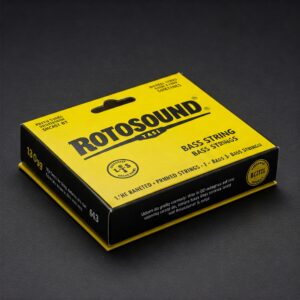
Best Practices for Recording with Rotosound Bass Strings
Recording studios present unique considerations for rotosound bass strings. Here are professional tips for capturing their distinctive tone:
String Age and Studio Sessions
Many experienced session players have specific preferences regarding string freshness for recording:
- Fresh Strings: Brand new rotosound bass strings provide maximum brightness and attack, ideal for funk, rock, and situations where the bass needs to cut through dense arrangements. Many pros install fresh Swing Bass 66 strings the day before (not the day of) recording to allow them to stabilize while maintaining brightness.
- Broken-In Strings: For warmer genres like jazz or folk, rotosound bass guitar strings with 1-2 weeks of play often deliver more balanced tone. The Jazz Bass 77 series, in particular, develops enhanced complexity after breaking in.
- Hybrid Approach: Some session players use fresh rotosound bass strings on higher strings for definition while keeping older strings for lower positions to balance brightness with fundamental power.
Microphone Selection and Placement
For capturing rotosound bass strings through an amplifier:
- Dynamic Microphones: Microphones like the Shure SM7B or AKG D112 capture the punchy midrange of rotosound bass strings effectively, working particularly well with the Swing Bass 66 series.
- Condenser Microphones: Large-diaphragm condensers like the Neumann U47 FET excel at capturing the detailed highs and lows of Jazz Bass 77 or Tru Bass 88 rotosound bass strings.
- Placement: Position microphones 1-3 inches from the speaker cone for maximum attack from roundwound rotosound bass guitar strings. For flatwounds, consider moving the microphone back slightly (3-5 inches) to capture their warmer character.
Direct Recording Techniques
When recording rotosound bass strings directly:
- DI Selection: Active DIs with transformers (like the Avalon U5) complement the Swing Bass 66 strings beautifully, adding pleasing harmonics and controlling their sometimes excessive highs.
- EQ Considerations: Rotosound bass strings often require different EQ approaches than other brands. For roundwounds, consider a slight cut around 700-900Hz to reduce midrange honk while preserving highs. For flatwounds, a gentle boost around 2-3kHz can enhance definition without sacrificing warmth.
- Compression Settings: Due to their dynamic response, rotosound bass guitar strings often benefit from careful compression. Start with modest ratios (3:1 to 4:1) and adjust attack times to preserve their characteristic initial transient while controlling sustain.
Mixing Considerations
When mixing tracks recorded with rotosound bass strings:
- Frequency Management: The brightness of Swing Bass 66 rotosound bass strings means they often need less high-end boost than other brands. Instead, focus on controlling and shaping their already present upper harmonics.
- Low-End Treatment: Despite their brightness, rotosound bass strings deliver substantial low-end that may require management in dense mixes. Consider using a high-pass filter around 30-40Hz and gentle sidechain compression against kick drums for clarity.
- Parallel Processing: Many engineers find that rotosound bass guitar strings respond particularly well to parallel compression and saturation techniques, allowing their clean articulation to blend with processed warmth for the best of both worlds.
By understanding these recording considerations specific to rotosound bass strings, you can capture their distinctive character effectively in the studio.
Famous Bassists and Their Rotosound String Choices
Throughout music history, many legendary bassists have relied on rotosound bass strings to craft their signature sounds. Here’s how some of the most influential players have utilized these strings:
John Entwistle (The Who)
The “Ox” was perhaps the most famous rotosound bass strings advocate, using Swing Bass 66 roundwounds to create his groundbreaking aggressive tone. Entwistle’s technical playing style, featuring rapid fills and chordal passages, showcased the exceptional clarity and response of these strings.
His preference was typically for medium gauges (45-105), which provided enough tension for his powerful playing while maintaining the flexibility needed for his lightning-fast runs. The bright attack of rotosound bass guitar strings was crucial for his distinctive lead bass approach, allowing his complex lines to cut through The Who’s wall of sound.
Paul McCartney (The Beatles, Wings)
McCartney’s adoption of rotosound bass strings in the mid-1960s significantly evolved his sound from the flatwound thump of early Beatles recordings to the more articulate tone heard on later classics. He typically used Swing Bass 66 strings on his Hofner Violin Bass and later his Rickenbacker 4001S.
For his Hofner, McCartney often selected lighter gauges to complement the short-scale instrument’s inherent warmth. The distinctive bright tone of rotosound bass strings can be clearly heard on tracks like “Paperback Writer,” where the bass takes a prominent role in the arrangement with exceptional note definition.
Geddy Lee (Rush)
Lee’s complex, melodic bass playing style found a perfect match in rotosound bass guitar strings, which provided the clarity needed for his intricate passages to be heard alongside Alex Lifeson’s guitars and Neil Peart’s drums. He primarily used Swing Bass 66 sets, typically in medium-heavy gauges.
The bright attack and sustain of rotosound bass strings were essential components of Rush’s sonic landscape, particularly during the band’s progressive rock heyday. Lee’s distinctive tone, combining rotosound bass strings with his Rickenbacker 4001 and later his Jazz Bass, became one of the most recognizable bass sounds in rock.
Billy Sheehan
Virtuoso bassist Billy Sheehan relies on rotosound bass strings (specifically custom Swing Bass 66 sets) for his aggressive two-handed tapping style and harmonic techniques. The brightness and durability of these strings complement his technical approach perfectly.
Sheehan typically uses a hybrid gauge set on his signature Yamaha basses, with a heavier low E string for powerful root notes and lighter gauges for the upper strings to facilitate his advanced techniques. The consistent tension and response of rotosound bass guitar strings are crucial for his precise playing style.
Steve Harris (Iron Maiden)
Iron Maiden’s founder and bassist developed his own signature set of rotosound bass strings after decades of using the standard Swing Bass 66 sets. His playing style, featuring rapid finger-picking and galloping rhythms, demands strings with exceptional durability and response.
The Steve Harris Signature rotosound bass strings feature customized gauges (50-110) that provide the tension and punch needed for his aggressive playing technique. Their bright tone ensures his intricate bass lines remain distinct within Iron Maiden’s twin-guitar attack, while their durability withstands his energetic stage performances.
Roger Waters (Pink Floyd)
Waters’ melodic, songwriting-focused bass approach benefited from the clarity and sustain of rotosound bass guitar strings. Primarily using Swing Bass 66 sets on his Fender Precision Basses, Waters created memorable bass lines that serve the song rather than showcase technical flash.
The articulation provided by rotosound bass strings allowed Waters’ distinctive sliding techniques and rhythmic approaches to come through clearly in Pink Floyd’s atmospheric soundscapes. His tone evolved throughout his career, but the distinctive character of Rotosound remained a constant element.
✨ Transform Your Bass Sound Today! 🎸
➡ Ready to experience the legendary Rotosound tone? The strings featured in this guide are available now with fast shipping. Click any bold product name to check current pricing and elevate your playing today!
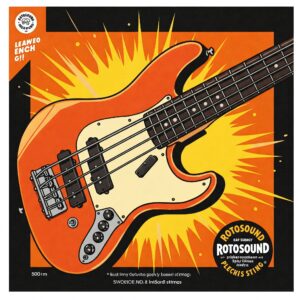
Conclusion: Are Rotosound Bass Strings Right for You?
After this comprehensive exploration of rotosound bass strings, the question remains: are they the right choice for your playing needs? The answer depends on several factors:
For players seeking exceptional brightness, articulation, and the historic tone that shaped countless classic recordings, rotosound bass strings – particularly the Swing Bass 66 series – offer unmatched character. Their distinctive attack and sustain have defined the sound of rock, punk, and metal bass for generations.
If you prioritize warmth, smoothness, and reduced finger noise, the Jazz Bass 77 or Tru Bass 88 rotosound bass guitar strings provide sophisticated alternatives without sacrificing quality or durability. These strings excel in jazz, blues, and studio environments where a more traditional tone is desired.
Consider your instrument and playing style carefully when making your selection. Different basses respond uniquely to various rotosound bass strings, and your technique will significantly impact which model delivers your ideal tone. Don’t hesitate to experiment with different types – many professional bassists keep multiple sets on hand for different musical situations.
While rotosound bass strings typically command premium prices compared to budget alternatives, their exceptional durability and consistent performance make them a sound investment for serious players. The difference in tone, playability, and longevity often justifies the additional cost for those who depend on their instrument professionally.
Ultimately, the legendary status of rotosound bass strings isn’t accidental – it’s the result of over 60 years of innovation, quality manufacturing, and passionate devotion to creating strings that inspire musicians. Whether you’re looking to recreate classic tones or forge your own sonic path, these iconic strings deserve serious consideration.
Frequently Asked Questions About Rotosound Bass Strings
❓ How long do Rotosound bass strings last compared to other brands?
✅ Rotosound bass strings typically last 2-3 months of regular playing, outperforming many competitors by several weeks... While Swing Bass 66 strings gradually lose brightness after 3-4 weeks, their structural integrity remains excellent for much longer...
❓ Can I use Rotosound bass guitar strings on acoustic bass guitars?
✅ Yes, Rotosound makes dedicated acoustic bass strings in their Jumbo Bass series... These phosphor bronze strings deliver excellent projection and tone specifically designed for acoustic resonance...
❓ What's the price difference between Rotosound bass strings and budget alternatives?
✅ Rotosound bass strings typically cost $25-45 per set, about 30-40% more than budget brands... However, their extended tone life, superior performance, and British manufacturing quality make them more economical in the long run...
❓ How often should I replace my Rotosound bass strings for recording sessions?
✅ For maximum brightness, replace Swing Bass 66 strings 1-2 days before recording... For jazz or warmer styles, strings with 1-2 weeks of play often provide ideal tone balance with reduced finger noise...
❓ Are there different Rotosound bass strings for 5-string basses?
✅ Rotosound offers several 5-string sets including Swing Bass RS665LD and Jazz Bass RS775... These maintain consistent tension across all strings with a well-balanced B string that avoids excessive floppiness compared to competitors...
Recommended for You:
- 10 Amazing Flatwound Bass Guitar Strings That Will Transform Your Sound in 2025
- 7 Best 6 String Fretless Bass Options That Will Transform Your Sound in 2025
- 10 Amazing Yamaha 5 String Bass Options That Will Transform Your Sound in 2025
Disclaimer: This article contains affiliate links. If you purchase products through these links, we may earn a small commission at no additional cost to you.
✨ Found this helpful? Share it with your friends! 💬🤗

